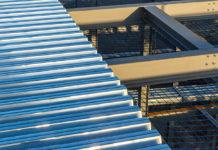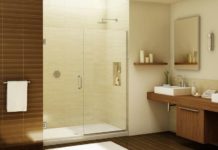A deflector is a nozzle that is mounted on an exhaust hood, chimney, car, which enhances the air flow from the inside to the outside.
There are plenty of proposals for ventilation devices, different in form, functionality and cost, so we will deal with their features and purpose, as well as consider the criteria for choosing a ventilation nozzle. The editors of the site "Ya Nashla" offer you an overview of the best ventilation deflectors for 2020.
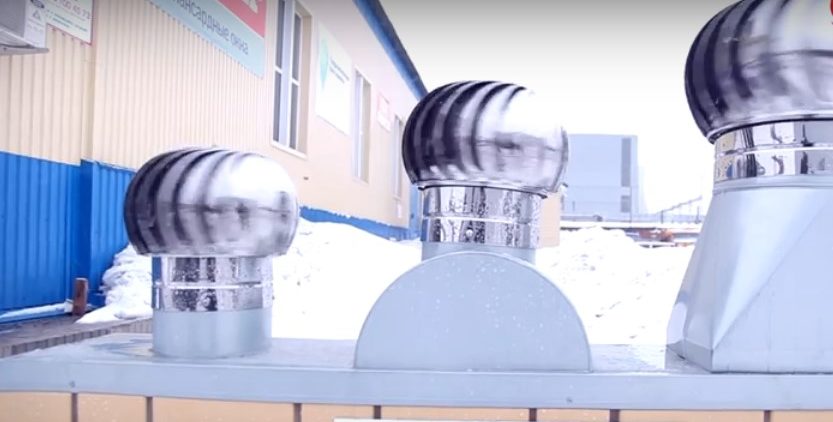
Content
- 1 Deflector - what is it
- 2 Installation
- 3 Deflector do it yourself
- 4 Rating of high-quality ventilation deflectors popular among buyers
- 4.1 Roof deflector / D 200 mm, galvanized steel
- 4.2 Deflector ridge Alipai / 75 for roof ventilation
- 4.3 Ventilation outlet Wirplast / K88-2 uninsulated D125 brown
- 4.4 Deflector pitched
- 4.5 Deflector roof / TD-150, stainless steel.
- 4.6 Base deflector / TechnoNIKOL, brown
- 4.7 Base deflector Vilpe / Ross-125/135 790311
- 5 Conclusion
Deflector - what is it
Indoor ventilation is necessary to create a normal microclimate. Installation of ventilation is a reasonable solution to this issue. But the hood may not always work well for various reasons, therefore, to increase the traction through the ventilation system, deflectors are additionally installed on it.

In simple language: The deflector is a nozzle, a hood on the ventilation opening, which enhances the intake of air and the release of combustion products.
It does not require an electrical connection, operating from natural, wind energy.
Application
Deflectors have several functional areas:
- activation and increase in the circulation of air flows;
- increasing the overall performance of the ventilation system by 20%;
- protection against the formation of reverse thrust, fat accumulations on the walls of the ventilation compartment;
- protection against the ingress of atmospheric precipitation into the ventilation mine and the formation of negative consequences from their ingress;
- blocking the entry of small objects, debris, birds, dust, leaves, etc;
- as a smoke extractor;
- spark damper.
Those. by installing this device, many tasks are solved at once.
Depending on the design, their use is possible in several cases:
- roof - on chimneys in private houses (with boilers, fireplaces, stoves), on the roofs of multi-storey buildings, industrial premises, garages and other buildings;
- basement - for air circulation in basements, removing dampness, radon (radioactive gas, dangerous to human health), replenishment of fresh air;

- automobile - cut off the external air flow and the danger of various objects entering from the route, dirt, dust particles, sand, precipitation. Placed on side windows, on the roof, on the rear window, above the headlights. The size and curvature depend on the car model for which it is intended.
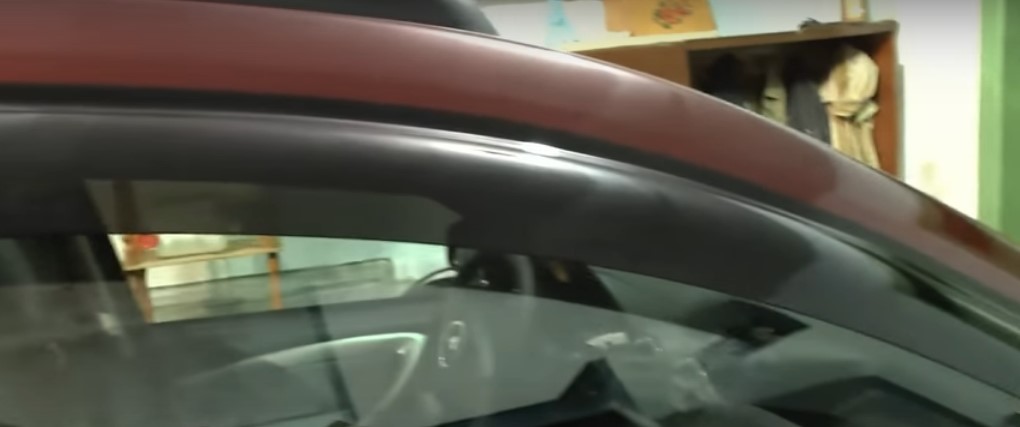
- For air conditioners - baffle screens that reflect the air flow from the installation to the walls or ceiling (using a certain slope), distributing the flow evenly throughout the room.
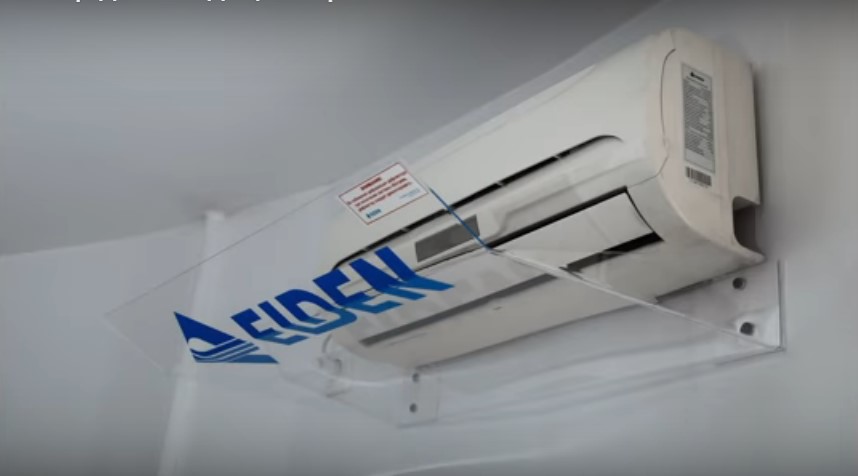
- Indoor - mounted indoors, diffusing the flow of fresh air and preventing draft. The speed of internal air displacement increases without the need for a draft.
How it works, the principle of action
The principle of operation of ventilation deflectors for rooms is simple and based on the laws of physics. Wind air currents, bending around the fence (ventilation shaft, pipe, plane) from different sides, create rarefied air around it and a low pressure zone. It is thanks to the created zone that the traction from the ventilation compartment is increased.
Without a deflector, during strong winds, ventilation is shut off from the outside by the strong air pressure created, and the escape of the generated internal gases becomes difficult. There is no draft, the functioning of the air flow is difficult. The baffle lowers the external pressure, forcing the gases accumulated inside to escape.
How the roof deflector works
There is a basic type of roof deflector device, these are:
- body - made in the form of a ring or cylinder. The part cuts through a direct stream of moving air. A low atmospheric pressure is created inside it. It is connected to the diffuser using several mountings.
- The diffuser is a tapered piece with a truncated cone. It is by the truncated part that it is connected to the body, with an extension at the top. Once inside, air movement slows down and branches out.
- A hood or umbrella is the top of the entire device. Air from the diffuser enters it and the pressure decreases. Attaches directly to the diffuser with fasteners to protect the interior.
These elements, combined in a single structure, create a powerful traction amplifier.
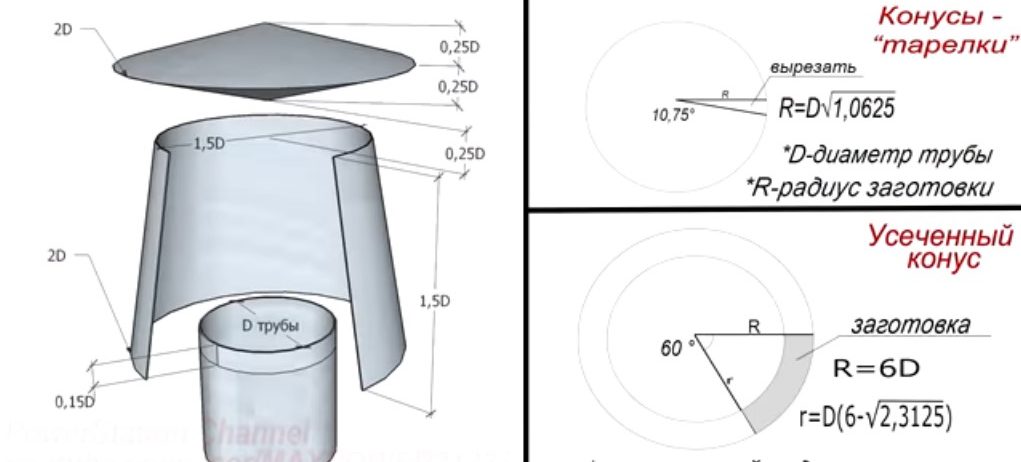
What are
According to the shape of the outer cap, the deflectors are in the form:
- flat;
- semicircular;
- gable device.
By design, exhaust hoods are divided into several types:
- static (stationary) - the simplest type that you can make yourself;
- static with fan - an ejection fan is installed under the fixed wind canopy. After a special sensor detects a decrease in draft, the fan is switched on to continue functioning.
- Swivel - made like a weather vane, rotates depending on the direction of the wind.
Rotary or turbo - with a rotating element. Its base is fixed (static), and the umbrella, consisting of blades, rotates. - Double cone - effective in cases of reflection from the umbrella of the air flow. One of the umbrellas is located lower relative to the other and performs the function of removing air from the room. Both are attached to a common base.
Popular designs include:
- TsAGI
Developed by the specialists of the Central Aero Hydro Dynamic Institute - a universal nozzle. Based on the use of a cone-shaped cap that provides increased traction to a round or rectangular base. Works best at a height of 1 - 1.5 m from the roof. Uninterrupted operation takes place even in strong winds.
The undoubted advantages include:
- protection from atmospheric precipitation of the upper part of the branch pipe (section of the base pipe);
- prevention of back thrust formation;
- at the outlet of cold gases, it is possible to replace steel parts with plastic ones, thereby partial savings.
The disadvantages include:
- dependence of work on the direction of external air flow;
- in winter, the inner surface of the parts can be covered with a snow crust and block the passage.
- Turbo -, ball-shaped with rotation
Turbo deflector or rotary turbine. The action takes place due to the rotating blades of the spherical upper part, fixed on the base.
- Astato - open poppet, statodynamic type
Double-acting model of the French brand Astato. The traction is increased by wind currents and a built-in fan.
- Grigorovich - a simple classical device
The materials for the production are galvanized sheet metal, steel or special metal for boilers, 0.5 mm thick.The base in the form of a truncated cone consists of several sections of pipes, an upper cylinder (diffuser) put on it, a plate of two umbrellas (a cap and a reverse cone), and brackets. The disadvantage of this design is the reduction of its work in the conditions of the wind direction from below.
- Volpert-Grigorovich
A more complex model based on the above. Diffuser, reverse cone and cover are combined together.
- Weather vane - improved turning mechanism
It makes turns following the direction of the wind, like a sail. As a result, traction is increased, ventilation is formed, and sparking is prevented. Additional protection is provided by the flap, which also rotates.
The constituent parts of the structure are:
- semi-cylindrical element for creating an obstacle to the wind;
- damper - protection from external debris;
- canvas sail - to create wind rotation;
- device for fixing the system;
- the main axis is for fastening all components.
- H-type
Suitable for use in industrial and industrial buildings. The name comes from the external similarity of the deflector with the letter n. A horizontal pipe is attached to the base of the device, along the edges of which there are two vertical pipes. A special feature is the absence of a protective cap due to its uselessness and efficient operation in any wind direction.
- "Smoke Tooth"
Differs in the way of installation. Installation takes place in the smoke intake door. One end of the device is led out, behind the wall of the room. The second is on the roof surface. This type does not require elevation above the roof. With the help of an installation of such a design, it becomes possible to regulate the increase or decrease in the flow of air masses.
- Round "Volper"
A modified analogue of the TsAGI deflector. It has one difference from it: a protective cone-shaped cap, which is located above the diffuser. It performs protective functions against precipitation, debris, dust, leaves, small rodents. The rest of the designs are similar.
- Khanzhonkova
A fixed base is installed around the pipe. A plate-shaped nozzle is attached to it on top. It serves as a pull-out piece and protection against precipitation.
- DS series
A static type of deflector that looks like Astato. It differs from it in the fixed fastening of all constituent structural parts. A truncated cone-shaped umbrella is attached to a fixed base; above it is another one of the same type. They are located at a distance from each other and are attached along the entire diameter with a mesh cloth. The cone-shaped hood completes the design.
- Basement
Installed for ventilation and moisture reduction in basements. It has the appearance of an L-shaped pipe, the length of which can be changed by building up or sawing off.
Material for making
Deflectors are distinguished by the material of manufacture:
- plastic - due to the fragility of the structure, they are not common;
- plastic coated metal - a more durable and visually attractive option;
- metal - special metal for boilers, more expensive, but highly resistant to burnout from hot air flow;
- galvanized steel is a more common type due to its practicality and cost;
- aluminum - another type of popular material, with a good price / quality ratio;
- copper is an expensive material, therefore it is rare.

Dimensions
The dimensions of the deflector must match the dimensions of the ventilation duct in order for it to work efficiently.
The required dimensions for the entire device can be obtained by performing simple calculations, which require knowledge of only the 1st value - the diameter of the hatch:
- 1.7 * hatch diameter = height of the entire structure;
- 1.8 * hatch diameter = cap size;
- 2 * hatch diameter = diffuser width.
Having received the necessary data, you can purchase or make your own ventilation structure for your niche.
For convenience, ready-made deflectors are assigned numbers from 3 to 10, corresponding to the size of the niche in decimeters. Thus, the removal of air flow from the ventilation shaft is taken into account.

Installation
The rules for installing ventilation deflectors are shown in the normative document SNiP 41012003, which indicates their permissible dimensions and the height of the attachment point.
The junction of the deflector with the shaft can be:
- flanged - a finished round or square product with holes for bolts, ensuring a tight connection;
- rectangular - used in the case of a square base of the deflector;
- round - the most common, due to the more frequent use of a round base type.
Installation recommendations:
- the ventilation unit must be accessible for air flows of different directions;
- the height of the structure should exceed the height of the roof ridge by 1.5 m. (optimal height for better efficiency);
- not to be installed in the area of aerodynamic shadows (dead space between buildings with the formation of rotating air flows).
The deflectors can be supplied either assembled or disassembled, therefore, before installation, you must first assemble it.
You can do it yourself in just a few steps:
- install the lower part on the ventilation hole, fix it with bolts or nuts;
- then the diffuser is attached (using a clamp);
- cap fixing with or without reverse taper using a bracket.
Ideal when the size of the hole and deflector are the same.
But if the coincidence is problematic for some reason, then the existing hole can be reduced with the help of a steel wire previously untwisted and wound around it.

What to look for
- Also, the deflector must meet all design parameters adopted in the document TU 36233780.
- If the release of aggressive air masses is expected, then a galvanized iron deflector is not used.
- To reduce thrust during strong winds, it is advisable to install a valve in front of the deflector.
- A preliminary calculation of the air temperature from the ventilation compartment will allow you to choose the right material from which the unit is made.
Repairs
The correct functioning of the ventilation system, like any other device, should be monitored.
A system malfunction will be reported by:
- the smell of dampness, putrefaction, debate;
- the appearance of fungal infections of mold in appropriate places with high humidity (behind the sink, in the bathroom, behind cabinets, side tables), and in open places (on walls, ceilings);
- condensation (on windows, walls, furniture surfaces);
- dampness and coolness - especially felt on things stored in the room;
- difficulties in oxygen supply and, accordingly, difficulty in breathing;
- the system itself can emit a hum or dull pops, exude a burnt smell.
Not only the internal microclimate of the room depends on the high-quality operation of the entire ventilation system, but also the safety of being in it, because combustion products can begin to accumulate and provoke complications in the respiratory tract.
If you notice the appearance of these signs, it is necessary to diagnose, identify and eliminate the causes of ventilation failure.
Troubleshooting
Undoubtedly, turning to the services of a specialist in this matter is of the highest priority.
But it is possible to carry out preliminary diagnosis using one of the following methods:
- in one of the rooms a window / window opens slightly. And a sheet of paper is brought to the ventilation grill. It is sucked in and held onto the grate during normal operation.
- To get a more accurate result, the use of a special device - an anemometer will help. With its help, the air flow rate is measured.
Correlating it with the shaft diameter, an accurate calculation of the flow is obtained from the data of a special table.
Or using the formula: Q = V * S * 360
V - readings of the anemometer;
S is the area of the vent hole;
Q is the volume of the passing stream.

The result is compared with the accepted circulation rates:
- in the kitchen - 60 cubic meters / hour;
- in the bathroom and toilet - 25 cubic meters / hour.
Now let's move on to considering the most common causes of breakdowns, these are:
- incorrect installation of the unit;
- inappropriate operation;
- ignoring preventive measures;
- mechanical damage;
- corrosion process;
- reduced wear resistance;
- debris plugging;
- the compressor is of insufficient power or its breakdown;
- inefficiency of filters, etc.
The listed reasons can lead to failure of the ventilation system and disruption of the entire circulation process.
On our own, it is recommended to carry out only minor repairs, preventive maintenance and cleaning of the walls of the ventilation mine, without serious intervention and dismantling of the structure.
In order not to make significant mistakes, the best solution would be to call the master.
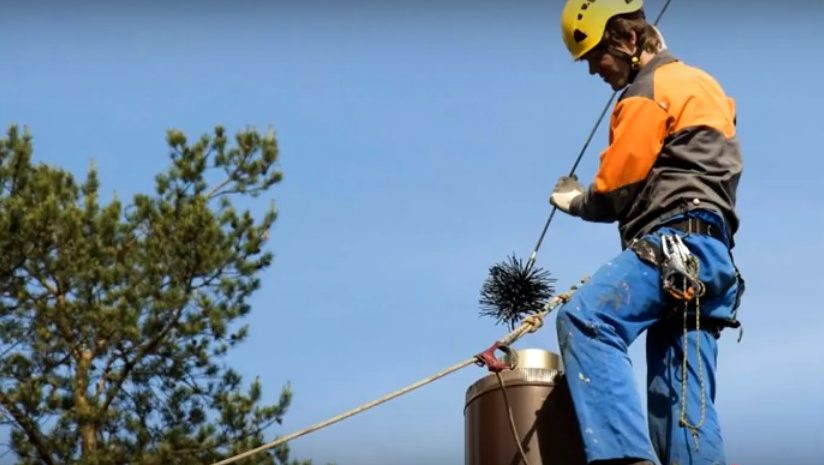
Deflector do it yourself
A model of a ventilation nozzle of a simple design, without complex mechanisms, it is quite possible to create it yourself, having acquired a suitable building material and prepared the necessary tools:
- roulette;
- scissors for metal work;
- grinder;
- drill;
- a set of keys;
- bolts, clamps, nuts.
A step-by-step plan for making and installing a deflector with your own hands:
- we carry out a drawing of the selected design, with the designation of all relevant dimensions;
- we transfer the obtained parts of the product to cardboard in full size, cut out;
- using cardboard templates we duplicate them on a steel sheet;
- we connect the resulting blanks with bolts, nuts, brackets in the prescribed manner (see above);
install on the roof.
Now it remains to enjoy the work of a properly assembled structure and grow in the eyes of households and their own.
To create a budget version of the chimney nozzle, you can opt for the Grigorovich device or a simple weather vane model.
Rating of high-quality ventilation deflectors popular among buyers
Roof deflector / D 200 mm, galvanized steel
- Manufacturer: Russia;
- Material: galvanized steel;
- Average cost: 792 rubles.

Ventilation device from the Russian brand "Aeroblock", which manufactures filters, silencers, flexible connectors, air valves and much more.
The deflector is made of galvanized steel, 0.5 mm thick. Its height is 34 cm; cylinder diameter - 40 cm, with a height of 24 cm.Weighing 4 kg, suitable for installation on an air outlet with a diameter of 20 cm.
The design consists of a round base, a cone-shaped diffuser with a truncated edge, an umbrella.
The product will help increase cravings, protect against pollution, debris, small animals, and natural precipitation.
Advantages:
- increased traction;
- anti-corrosion material;
- protection from external contamination;
- design versatility;
- material thickness.
Disadvantages:
- price;
- the diameter is not suitable for every ventilation compartment.
Deflector ridge Alipai / 75 for roof ventilation
- Manufacturer: Russia-Finland;
- Average cost: 2500 rubles.

This model from a Russian-Finnish enterprise is made in 3 versions - 31 cm, 38 cm, 43 cm. The diameter of the pipes, respectively, is 11 cm; 7.5 cm; 16 cm.
This is a good opportunity to select the required size of the aero product for the existing ventilation hole.
Deflector weight - 0.8 kg, brown, which is universal in products of this type.
The base of two inclined planes allows installation of the deflector on the roof with an inclination angle of 27 degrees. Installation is carried out directly under the roof sheets.
Advantages:
- neat appearance;
- the ability to choose a suitable size;
- efficiency;
- lightness;
- compactness.
Disadvantages:
- expensive.
Ventilation outlet Wirplast / K88-2 uninsulated D125 brown
- Manufacturer: Poland;
- Average price: 2665 rub.
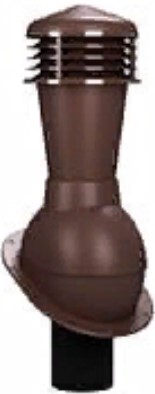
The type of non-insulated (non-insulated) deflector from the Wirplast brand is made for the possibility of ventilation of rooms, kitchens, toilets, sewer shafts.
Vent pipe with a diameter of 12.5 cm and a height of 50 cm, made of polypropylene in a universal brown color.
Has a protective layer against UV rays. Fastening to the finished roof.
Installed on a pitched roof.
Advantages:
- quality;
- design;
- efficiency.
Disadvantages:
- not found.
Deflector pitched
- Manufacturer: Poland;
- Average price: 2400 rubles.

Another deflector model from the VILPE / ALIPA brand, designed for installation on pitched roofs.
The aerator consists of a cap that protects the device and the ventilated room from precipitation.
Deflector diameter: 11 cm, passage width: 48.8 cm, passage length: 58.3 cm, total height: 68.6 cm.
Advantages:
- quality of protection;
- productivity;
- Beautiful design.
Disadvantages:
- expensive;
- suitable for one roof option.
Deflector roof / TD-150, stainless steel.
- Manufacturer: Russia;
- Material: st. steel;
- Average price: 3315 rub.

Roof turbo deflector for ventilation of rooms, lavatories, cellars, private garages.
Large selection of sizes for different duct diameters. The manufacturer gives a 1 year warranty for the product.
Made of stainless steel, works silently. Installed both on residential multi-apartment premises and on industrial premises (farms, hangars, warehouses, etc.).
Diameter: 15 cm. The required quantity is calculated depending on the size of the room.
Advantages:
- beautiful appearance;
- silent work;
- material;
- continuous work;
- effective ventilation;
- ventilation compartment protection.
Disadvantages:
- small size;
- price.
Base deflector / TechnoNIKOL, brown
- Manufacturer: Russia;
- Material: PVC;
- Average price: 3000 rubles.

One of the leading European brands, since 1992 producing roofing, waterproofing and thermal insulation materials. Constantly expands the assortment line, responding to consumer needs.
The model is designed for ventilation of garages, saunas, basements, boiler rooms, etc.
Made of polyvinyl chloride resistant to alkalis, acids, mineral oil, solvents.
High resistance to fire (depending on additives), heat resistance.
Not high frost resistance.
Advantages:
- neat design;
- ease of installation;
- efficiency;
- protective functions;
- length regulation.
Disadvantages:
- price;
- not high frost resistance.
Base deflector Vilpe / Ross-125/135 790311
- Manufacturer: Finland;
- Average price: 4024 rubles.
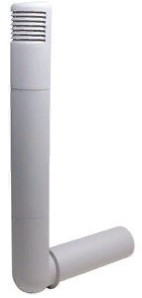
The product of a Finnish brand that has been producing roof accessories and products for indoor ventilation since 1970. The company first began to use PVC material for the manufacture of its products, breaking the stereotype about the fragility of this material.
The basement deflector has dimensions: at the smaller hole D - 12.5 cm, the outer one - 13.1 cm, total length - 10.3 cm. It consists of two tubular parts that are connected into a single L-shaped device.
Elegant appearance and wide range of colors from gray, black, beige, to white and brown allow you to match the device to the color of the building facade. Additional fastening with brackets to the surface of the building creates a stable position for the visually fragile aero device. The outlet, located in the upper side part, is protected by a grill and prevents small objects from getting inside.
Compact dimensions do not interfere with movement near him.
The package includes: deflector; 2 clamps; 4 brackets for the wall; a set of nuts, screws, dowels, screws. The horizontal part of the deflector is connected to the vertical part, which is then attached to the wall using brackets.
It is used for ventilation of premises, supply of fresh air and purification from radon, dangerous to human health.
Advantages:
- ease of installation;
- wide color range;
- good equipment;
- protection from external factors;
- durability;
- stable mount.
- removal of radon.
Disadvantages:
- requires additional fastening.
Conclusion
Unhealthy air in a room is fraught with respiratory health problems for its residents and the threat of the development of chronic diseases, their exacerbation.
Deflectors perform the function of air renewal in the room, ridding it of stagnant air, removing harmful waste components, maintaining a healthy microclimate.

A correctly chosen high-quality deflector is a guarantee of the health of the whole family and the safety of the house. If you have experience in using the ventilation deflectors described in the rating, or a more interesting model, share your opinion in the comments.

